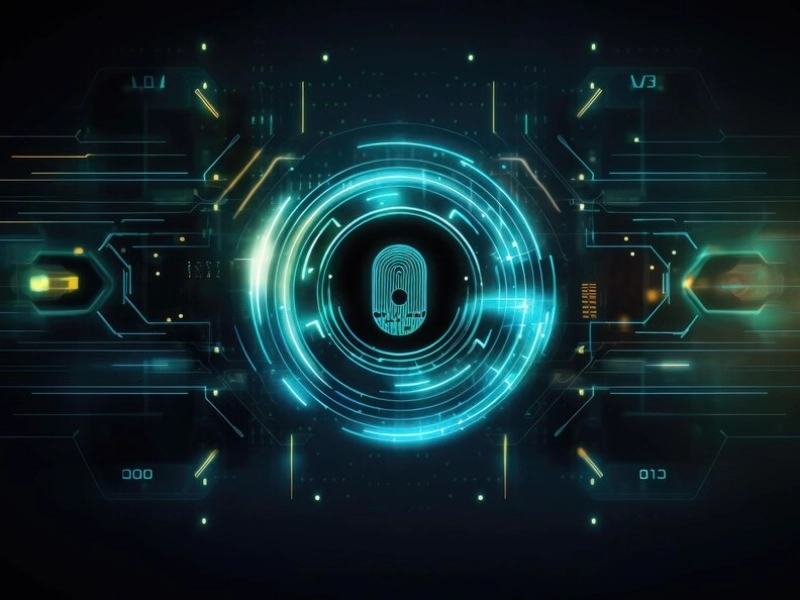- Threat actors leverage generative AI to escalate attacks, exploiting cloud vulnerabilities and geopolitical tensions.
- AI systems like ChatGPT can inadvertently generate sophisticated malware, evading traditional detection methods.
- Integration of AI into critical systems raises risks of cyber attacks compromising human safety, such as in autonomous vehicles and medical devices.
As AI technologies continue to evolve, so too do the risks and vulnerabilities they introduce. From the optimisation of cyber attacks to the inadvertent generation of sophisticated malware, the integration of AI into critical systems poses significant challenges for safeguarding digital infrastructure and protecting against emerging threats.
Risks of AI in cyber security
Cyber attacks optimisation
Experts caution that threat actors can leverage generative AI and large language models to amplify cyber attacks to unprecedented levels of speed and sophistication. These advancements enable attackers to devise innovative methods for breaching security systems, exploiting vulnerabilities, and perpetrating complex assaults. By harnessing generative AI, malicious actors can discover novel avenues for infiltrating cloud infrastructures, leveraging geopolitical tensions to orchestrate targeted attacks, and refining strategies for deploying ransomware and phishing campaigns with heightened efficacy and stealth.
Automated malware
AI-powered systems such as ChatGPT demonstrate capabilities in processing vast amounts of data with precision and efficiency. While these technologies are designed with safeguards to prevent the generation of malicious code, resourceful adversaries can exploit vulnerabilities to craft sophisticated malware that evades detection and wreaks havoc on targeted systems. For instance, researchers have identified loopholes in AI-driven platforms, enabling the creation of nearly undetectable data-theft executables, reminiscent of techniques employed by state-sponsored threat actors.
Physical safety concerns
As AI continues to permeate critical systems across various industries, the potential risks to physical safety escalate significantly. A cyber security breach in an AI-powered autonomous vehicle could compromise passenger safety, while manipulation of data within construction equipment or medical devices could lead to hazardous conditions and life-threatening consequences. The integration of AI into such systems necessitates stringent security protocols to safeguard against malicious exploitation and mitigate potential risks to human lives.
AI privacy risks
Instances of AI systems inadvertently leaking sensitive information underscore the privacy risks inherent in these technologies. Despite efforts to rectify such breaches, the vast amounts of data processed by AI systems pose ongoing threats to user privacy and data security. Malicious actors exploiting vulnerabilities in AI infrastructure could gain access to sensitive information, while AI-driven surveillance and profiling technologies raise concerns regarding infringements on individual privacy rights and civil liberties.
Stealing AI models
The theft of AI models presents a significant threat, with adversaries leveraging network attacks, social engineering tactics, and vulnerability exploitation to pilfer proprietary technologies. Stolen AI models can be manipulated and repurposed to assist in various malicious activities, exacerbating risks to digital security and intellectual property rights.
Data manipulation and poisoning
AI’s reliance on training data makes it susceptible to manipulation and poisoning, wherein attackers can tamper with datasets to yield unexpected or malicious outcomes. By injecting biased or falsified data into AI training sets, adversaries can compromise the integrity and reliability of AI-powered systems, posing substantial risks across diverse sectors, including healthcare, finance, and transportation.
Impersonation and deepfakes
Advancements in AI-driven deepfake technologies enable realistic impersonations, facilitating various forms of fraud, deception, and misinformation campaigns. From synthetic voices mimicking real individuals to convincingly manipulated video footage, deepfake technologies pose significant challenges for authentication, identity verification, and trust in digital communications.
More sophisticated attacks
Malicious actors can leverage AI to orchestrate more sophisticated and nuanced attacks, ranging from automated phishing campaigns to advanced malware variants capable of evading traditional security measures. AI-powered tools enable attackers to automate the process of reconnaissance, weaponise vulnerabilities, and exploit weaknesses in target systems with greater precision and efficiency.
Also read: How criminals used AI face apps to swindle users: A China case study exposes the risks
Mitigating AI risks in cyber security
Audit any AI systems you use
Check the current reputation of any AI system you use to avoid security and privacy issues. Organisations should audit their systems periodically to plug vulnerabilities and reduce AI risks. Auditing can be done with the assistance of experts in cyber security and artificial intelligence who can complete penetration testing, vulnerability assessments and system reviews.
Limit personal information shared through automation
More people are sharing confidential information with artificial intelligence without understanding the AI risks to privacy. For example, staff at prominent organisations were found putting sensitive company data in ChatGPT. Even a doctor submitted his patient’s name and medical condition in the chatbot to craft a letter, not appreciating the ChatGPT security risk.
Such actions pose security risks and breach privacy regulations like HIPAA. While AI language models may not be able to disclose information, conversations are recorded for quality control and are accessible to system maintenance teams. That’s why it’s best practice to avoid sharing any personal information with AI.
Data security
As mentioned, AI relies on its training data to deliver good outcomes. If the data is modified or poisoned, AI can deliver unexpected and dangerous results. To protect AI from data poisoning, organisations must invest in cutting-edge encryption, access control, and backup technology. Networks should be secured with firewalls, intrusion detection systems, and sophisticated passwords.

Optimise software
Follow all the best practices of software maintenance to protect yourself from the risk of AI. This includes updating your AI software and frameworks, operating systems, and apps with the latest patches and updates to reduce the risk of exploitation and malware attacks. Protect your systems with next-generation antivirus technology to stop advanced malicious threats. In addition, invest in network and application security measures to harden your defences.
Adversarial training
Adversarial training is an AI-specific security measure that helps AI respond to attacks. The machine learning method improves the resilience of AI models by exposing them to different scenarios, data, and techniques.
Vulnerability management
Organisations can invest in AI vulnerability management to mitigate the risk of data breaches and leaks. Vulnerability management is an end-to-end process that involves identifying, analysing, and triaging vulnerabilities and reducing your attack surface related to the unique characteristics of AI systems.
AI incident response
Despite having the best security measures, your organisation may suffer an AI-related cybersecurity attack as the risks of artificial intelligence grow. You should have a clearly outlined incident response plan that covers containment, investigation, and remediation to recover from such an event.
Also read: How does AI apply to cybersecurity?
Benefits of AI in cyber security
Cyber threat detection
Advanced malware can elude standard cyber security measures through various evasion tactics, such as code and structure alterations. However, sophisticated antivirus software empowered by AI and ML can detect irregularities in the overall structure, programming logic, and data of potential threats.
AI-driven threat detection tools enhance organisations’ protection by identifying emerging threats and enhancing their ability to anticipate and respond to warnings. Additionally, AI-based endpoint security software can safeguard the laptops, smartphones, and servers within an organisation.
Predictive models
By utilising generative AI, cybersecurity professionals can shift from a reactive stance to a proactive one. For instance, they can employ generative AI to develop predictive models that anticipate new threats and mitigate risks.
Phishing detection
Phishing emails pose a significant threat. With minimal risk, malicious actors can exploit phishing tactics to steal sensitive information and money. Moreover, differentiating phishing emails from legitimate ones is becoming increasingly challenging.
AI can enhance cybersecurity efforts by bolstering phishing detection. Email filters incorporating AI can scrutinise text to identify emails with suspicious patterns and block various types of spam.
Identifying bots
Bots can disrupt networks and websites, jeopardising an organisation’s security, productivity, and revenue. They can also seise control of accounts using stolen credentials and aid cybercriminals in fraudulent activities.
Software employing machine learning-based models can analyse network traffic and data to detect bot behaviours, assisting cybersecurity experts in countering them. Network specialists can also utilise AI to devise more secure CAPTCHA mechanisms against bots.
Securing networks
After infiltrating a network, attackers may exfiltrate data or deploy ransomware. Early detection of such threats is crucial. AI-based anomaly detection can monitor network traffic and system logs for signs of unauthorised access, unusual code, and other suspicious activity to prevent breaches. Furthermore, AI can assist in network segmentation by analysing requirements and characteristics.
Incident response
AI can enhance threat hunting, management, and incident response. It operates continuously to address threats and take immediate action, even when your team is unavailable. Moreover, it reduces incident response times, minimising the impact of an attack.
Strengthening access control
Many access control systems utilise AI to bolster security. They can block logins from suspicious IP addresses, flag suspicious activities, and prompt users with weak passwords to update their credentials and adopt multi-factor authentication.
AI also aids in user authentication by leveraging biometrics, contextual information, and user behaviour data to accurately verify the identities of authorised users and reduce the risk of misuse.

